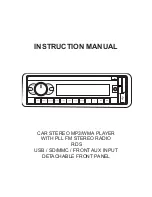
25-67
Cisco Security Appliance Command Line Configuration Guide
OL-12172-03
Chapter 25 Configuring Application Layer Protocol Inspection
SIP Inspection
As a call is set up, the SIP session is in the “transient” state until the media address and media port is
received from the called endpoint in a Response message indicating the RTP port the called endpoint
listens on. If there is a failure to receive the response messages within one minute, the signaling
connection is torn down.
Once the final handshake is made, the call state is moved to active and the
signaling connection remains
until a BYE message is received.
If an inside endpoint initiates a call to an outside endpoint, a media hole is opened to the outside interface
to allow RTP/RTCP UDP packets to flow to the inside endpoint media address and media port specified
in the INVITE message from the inside endpoint. Unsolicited RTP/RTCP UDP packets to an inside
interface does not traverse the security appliance, unless the security appliance
configuration
specifically allows it.
Configuring a SIP Inspection Policy Map for Additional Inspection Control
To specify actions when a message violates a parameter, create a SIP inspection policy map. You can
then apply the inspection policy map when you enable SIP inspection according to the
“Configuring
Application Inspection” section on page 25-5
.
To create a SIP inspection policy map, perform the following steps:
Step 1
(Optional) Add one or more regular expressions for use in traffic matching commands according to the
“Creating a Regular Expression” section on page 21-6
. See the types of text you can match in the
match
commands described in
Step 3
.
Step 2
(Optional) Create one or more regular expression class maps to group regular expressions according to
the
“Creating a Regular Expression Class Map” section on page 21-9
.s
Step 3
(Optional) Create a SIP inspection class map by performing the following steps.
A class map groups multiple traffic matches. Traffic must match
all
of the
match
commands to match
the class map. You can alternatively identify
match
commands directly in the policy map. The difference
between creating a class map and defining the traffic match directly in the inspection policy map is that
the class map lets you create more complex match criteria, and you can reuse class maps.
To specify traffic that should not match the class map, use the
match not
command. For example, if the
match not
command specifies the string “example.com,” then any traffic that includes “example.com”
does not match the class map.
For the traffic that you identify in this class map, you can specify actions such as drop-connection, reset,
and/or log the connection in the inspection policy map.
If you want to perform different actions for each
match
command, you should identify the traffic directly
in the policy map.
a.
Create the class map by entering the following command:
hostname(config)#
class-map type
inspect sip
[
match-all
|
match-any
]
class_map_name
hostname(config-cmap)#
Where the
class_map_name
is the name of the class map. The match-all keyword is the default, and
specifies that traffic must match all criteria to match the class map. The match-any keyword
specifies that the traffic matches the class map if it matches at leX( The CLI enters class-map
configuration mode, where you can enter one or more
match
commands.
b.
(Optional) To add a description to the class map, enter the following command:
hostname(config-cmap)#
description
string
Summary of Contents for 500 Series
Page 38: ...Contents xxxviii Cisco Security Appliance Command Line Configuration Guide OL 12172 03 ...
Page 45: ...P A R T 1 Getting Started and General Information ...
Page 46: ......
Page 277: ...P A R T 2 Configuring the Firewall ...
Page 278: ......
Page 561: ...P A R T 3 Configuring VPN ...
Page 562: ......
Page 891: ...P A R T 4 System Administration ...
Page 892: ......
Page 975: ...P A R T 5 Reference ...
Page 976: ......
















































